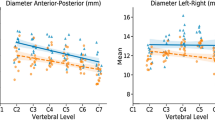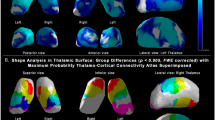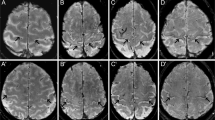Abstract
We examined 16 patients with autosomal dominant pure spastic paraplegia (HSP) and 15 normal controls matched for age and sex using MRI of the brain and spinal cord. Images were assessed qualitatively by two independent radiologists, blinded to the clinical diagnosis. Areas of the brain and corpus callosum on one midsagittal slice and the area of the brain on one axial slice were measured and a “corpus-callosum index” expressing the size of the corpus callosum relative to that of the brain was calculated. Cross-sectional areas and anteroposterior and transverse diameters of the spinal cord at the levels of C 2, C 5, T 3, T 6, T 9 and T 11 were measured. No significant differences between patients and controls were found on qualitative evaluation of the images. The patients had a significantly smaller corpus callosum and “corpus-callosum index” than controls. This finding, not reported previously, might indicate that the disease process in pure HSP is not confined to the spinal cord. The anteroposterior diameters of the spinal cord at T 3 and T 9 were significantly smaller in patients than in controls. This might correspond to the degeneration of the pyramidal tracts and the dorsal columns described at neuropathological examination.
Similar content being viewed by others
Author information
Authors and Affiliations
Additional information
Received: 8 August 1996 Accepted: 16 December 1996
Rights and permissions
About this article
Cite this article
Krabbe, K., Nielsen, J., Fallentin, E. et al. MRI of autosomal dominant pure spastic paraplegia. Neuroradiology 39, 724–727 (1997). https://doi.org/10.1007/s002340050495
Issue Date:
DOI: https://doi.org/10.1007/s002340050495




